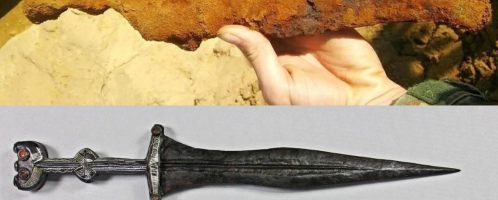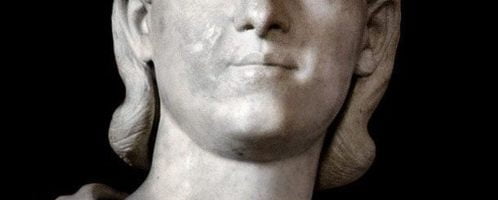If you have found a spelling error, please, notify us by selecting that text and pressing Ctrl+Enter.
Curiosities of ancient Rome (Artifact)
The world of ancient Romans abounded in a number of amazing curiosities and information. The source of knowledge about the life of the Romans are mainly works left to us by ancient writers or discoveries. The Romans left behind a lot of strange information and facts that are sometimes hard to believe.
Roman bust of probably 3-4-year-old girl
Roman bust of probably a 3-4-year-old girl. The object is located in The Cleveland Museum of Art in the USA; it is dated to the middle of the 3rd century CE.
Renovation of nearly 2000-year-old Roman dagger
Renovation of a nearly 2000-year-old Roman dagger. The entire process of refurbishment of weapons took 9 months. The object was found in 2019.
Roman decorated vessel
Roman glass vessel with white decorations showing the scene of the sacrifice. The facility is referred to as the “Morgan Cup” as it once belonged to the American businessman J. Pierpont Morgan. The artefact is dated to the 1st century CE; is located in the Corning Museum of Glass in New York (USA).
Roman bust of Julia Mamaea
Roman bust of Julia Mamaei, mother of Emperor Alexander Severus, who was only thirteen years old (222 CE) at the time of his official reign. In practice, power was in the hands of his mother Julia Mammei and his influential grandmother Julia Maesa, who had a great influence on him.
Ancient skull of man with serious wound
The skull of a man who received a severe blow to the skull in Roman times; however, the wound was healed. The man additionally suffered from a severe toothache; he finally died as a result of decapitation at the age of around 30. The remains were found at Corinium, in central England.
Amor’s digital reconstruction on dolphin
Digital reconstruction of a Roman sculpture from the 2nd century CE performed by “Chapps”. The object that adorned one of the Roman villas depicts Cupid on a dolphin. The artefact is in the National Archaeological Museum of Naples. The Roman sculpture was a copy of a Greek one.











